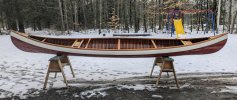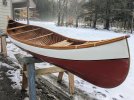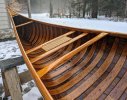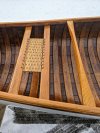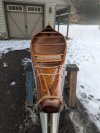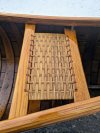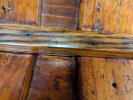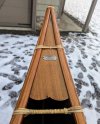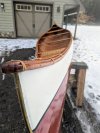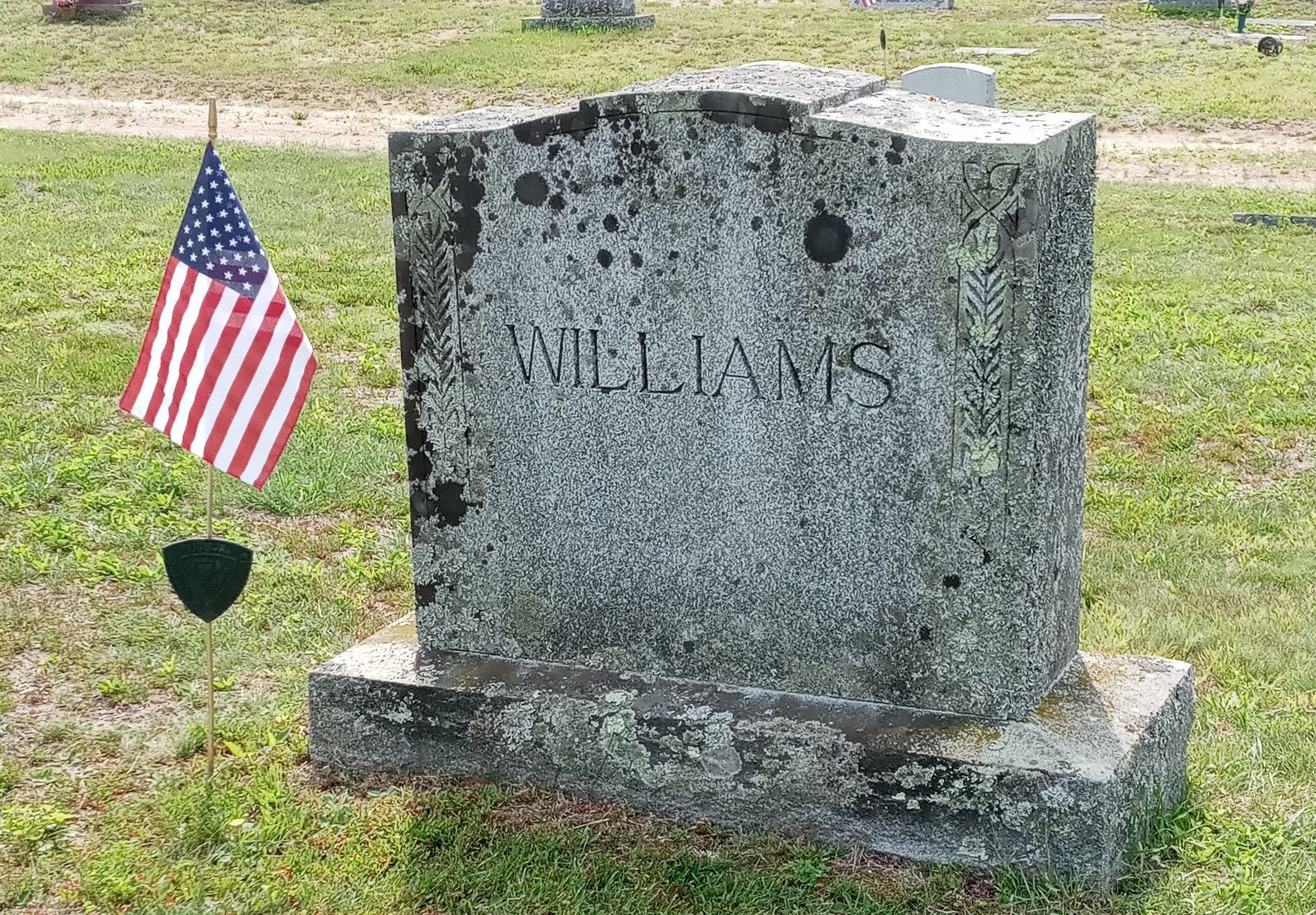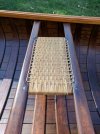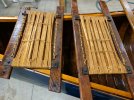1905Gerrish
Loves Old Maine canoes
I finished a restoration of this canoe yesterday. It was found on Lake Winnipesaukee here in NH years ago. It is similar in construction of the one shown in the January 2, 1895, Gerrish catalog, the earliest known catalog. I three cane wrappings at either end are visible in the catalog that mimic the local Penobscot and Passamaquoddy bark canoes of area. The canoe is numbered 589 which is the earliest recorded number I am aware of and stamped in either stem. The notable mention of the canoe is the upward facing lap jointed thwart just after the front seat. The decks are american chestnut. The seats and thwarts are a combination of american chestnut and white oak. The canoe appears to have gotten some use. 10 new ribs were installed. Luckily the rails were saved though as someone added 3/8" threaded rod carrying handles through them just behind the decks. The caps were unfortunately unsalvageable. The spray flam flotation under both decks was a nice feature, but I decided to remove it during the restoration. It has been restored to as close to original with a bit nicer paint than the dark green it was.


